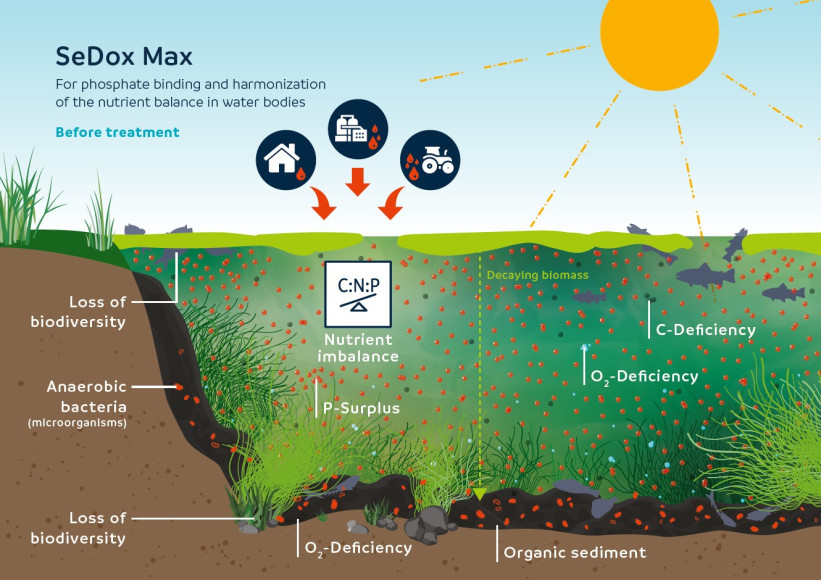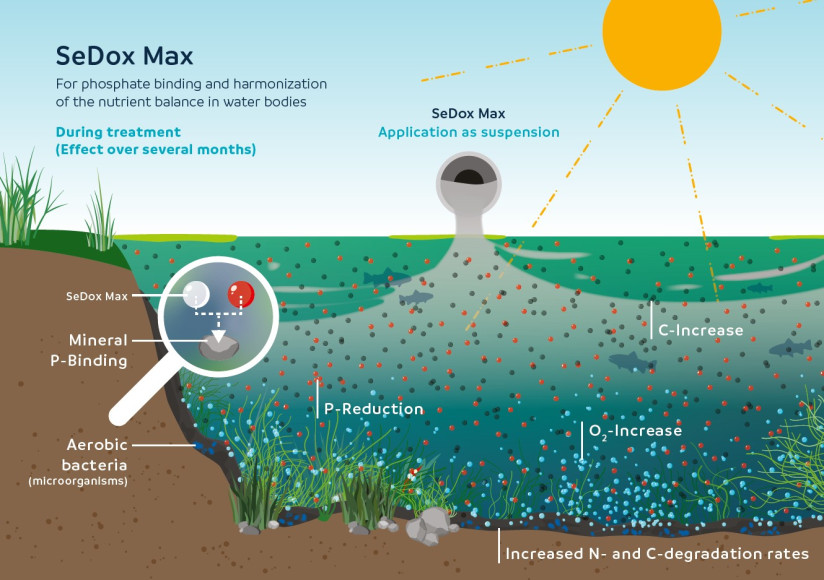Healthy Lake
SeDox Max Lake Phosphate Binder
SeDox Max Lake Phosphate Binder
Couldn't load pickup availability
SeDox Max – Advantages at a Glance
- Rapid binding of phosphates present both in sediment and in the water column
- Suppresses algae development by reducing available nutrients
- Provides immediate action and sustained binding activity for several months
- Uses a purely mineral-based mechanism to bind dissolved orthophosphate as well as orthophosphate released from sediments, effectively reducing overall phosphate concentrations to below 0.035 mg/L
SeDox Max offers a high binding capacity (30 g P per kg of product), even under low-phosphate conditions. Its innovative multi-component binding mechanism ensures rapid (within hours) and long-term immobilization of orthophosphate, maintaining stability for several months.
Recommended Dosage, Application, and Use
To maintain a stable nutrient balance, SeDox Max is best applied during winter and spring, or after any algae management treatment. The product can be distributed manually by spreading it evenly across the water surface, or it can be applied as a suspension (the product itself does not dissolve). When used as a suspension, phosphate removal efficiency increases due to prolonged contact between SeDox Max and orthophosphate in the water column.
- 50 g per m³ for the initial metre of water depth
- 15 g per m³ for each additional metre below the first
Nutrient Inputs and Ecological Impacts
External nutrient inputs from agriculture, wastewater treatment plants, and industrial sources are the primary drivers of nutrient over-enrichment—particularly of phosphorus (P) and nitrogen (N)—in aquatic systems. This excess supply disrupts natural ecological processes and can stimulate the overgrowth of unicellular algae (phytoplankton), including cyanobacteria, which thrive in the sunlit upper layers of the water column.
When phytoplankton die and settle to the bottom, microbial decomposition of the organic matter consumes dissolved oxygen (O₂), potentially creating hypoxic or anoxic conditions. Such environments threaten heterotrophic aquatic organisms, including fish, and can ultimately lead to a reduction in biodiversity.
Maintaining a balanced nutrient ratio is vital to supporting healthy aquatic ecosystems. When phosphorus, nitrogen, and carbon are present in the proper proportions—known as the Redfield ratio—the waterbody tends to remain in nutrient equilibrium, supporting diverse and stable biological communities. Conversely, imbalances in nutrient concentrations often trigger rapid proliferation of certain highly adapted algal species, disrupting ecosystem function.
Before SeDox Max Application:

During SeDox Max Application:

After SeDox Max Application:

Share


